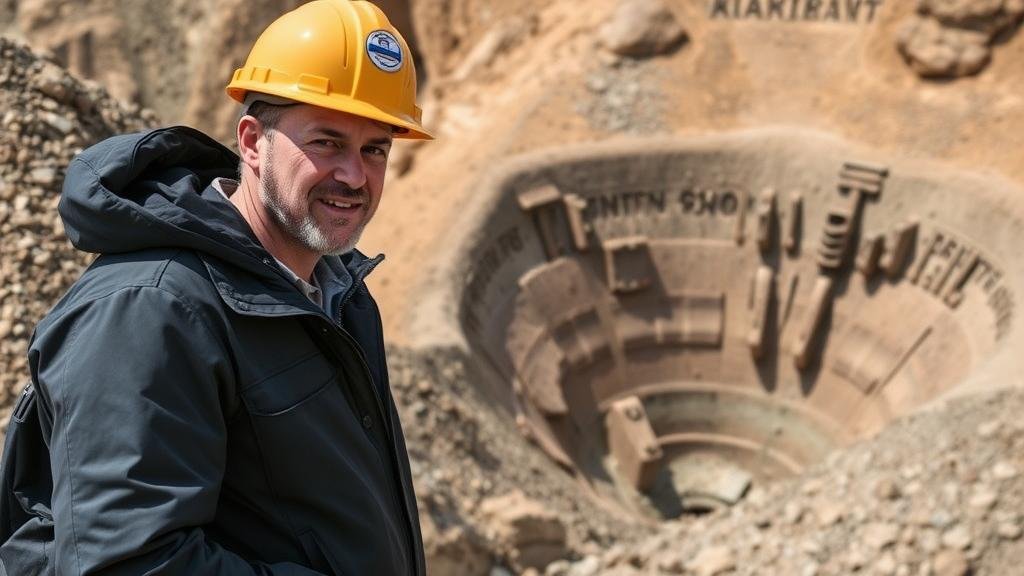Finding Untapped Pockets of Pay Dirt in High-Altitude Mining Areas
Finding Untapped Pockets of Pay Dirt in High-Altitude Mining Areas
High-altitude mining areas present unique environmental and geological conditions that can harbor untapped resources. While many mining operations focus on previously explored sites, there remain significant opportunities for discovering new deposits. This article explores the principles, methods, and technologies employed to identify these rich pockets, enhancing our understanding of high-altitude mining.
Understanding High-Altitude Mining Environments
High-altitude mining occurs in regions typically above 2,500 meters (8,200 feet). e environments have distinct geological formations, often characterized by metamorphic and igneous rocks. The primary minerals extracted in these areas include copper, gold, and silver, which are prevalent in high-altitude deposits. Understanding the specific geological settings is crucial for successful exploration.
Geological Surveys and Prospection Techniques
A comprehensive geological survey is the first step in discovering untapped mining resources. This involves:
- Geological mapping to identify rock types and structures.
- Geochemical sampling to detect mineral anomalies.
- Geophysical surveys, such as magnetic and electromagnetic surveys, to pinpoint potential ore bodies.
For example, a study in the Andes revealed that specific volcanic systems often contained unexploited deposits of copper ores. Utilizing advanced remote sensing technology allowed geologists to analyze extensive areas with greater efficiency, revealing previously hidden mineralization.
Utilizing Advanced Technologies
Technological advancements have significantly enhanced the potential for discovery in high-altitude mining areas. Noteworthy innovations include:
- Drone technology for aerial surveys, enabling quicker data gathering across rugged terrain.
- 3D modeling software to simulate subsurface geology for better targeting of drilling operations.
- Artificial intelligence algorithms that analyze large datasets to identify patterns indicative of ore presence.
For example, the use of drones equipped with sensors has transformed how mining companies assess remote areas. Companies operating in the Himalayas have successfully identified new mineralization sites where traditional exploration methods would have been impractical.
Environmental Considerations and Challenges
Mining in high-altitude regions poses both challenges and environmental responsibleness. The fragile ecosystems often found at these elevations require careful consideration in any exploration strategy. Effective practices include:
- Conducting environmental impact assessments prior to exploration.
- Useing sustainable mining techniques that minimize ecological disturbance.
- Engaging with local communities to ensure mining operations align with their interests and environmental priorities.
The case of the Cerro Verde Mine in Peru exemplifies this approach, where mining operations incorporated conservation measures to protect surrounding wildlife habitats, ensuring a balance between economic development and environmental sustainability.
Real-World Applications: Success Stories
Several notable mining operations have successfully tapped into high-altitude resources:
- The Grasberg Mine in Indonesia, one of the largest gold and copper deposits globally, continues to yield significant resources despite its high altitude.
- The Veladero Mine in Argentina demonstrates effective utilization of modern technology and local collaboration to identify and extract new gold deposits.
These examples highlight the potential of high-altitude mining through innovative strategies and responsible practices, achieving a balance between extraction and environmental preservation.
Actionable Takeaways
For mining professionals and companies looking to explore high-altitude areas, consider these strategies:
- Invest in advanced geophysical and geochemical surveying technologies.
- Prioritize environmental stewardship to maintain ecosystem balance.
- Leverage data analytics to enhance decision-making in resource identification.
By embracing these practices, mining stakeholders can uncover untapped pockets of pay dirt while contributing positively to the environments they operate within.



